Margaret notices that there are ceramic pulley-like structures attached to the overhead electrical lines near her house. Electrical wires pass over the pulleys as shown in the given figure.
These pulleys are used as electrical
Insulators
Generators
Conductors
Transformers
Step-by-Step Solution:
1. Identify the Purpose of the Ceramic Pulleys:
The ceramic pulley-like structures that Margaret observes are known as insulators. Their primary purpose is to support and separate electrical wires from the structures (like poles) they are attached to.
2. Understand the Function of Insulators:
Insulators are materials that do not conduct electricity. They prevent the electrical current from passing through them, ensuring that the electricity flows through the wires and does not leak to the ground or other structures.
3. Explain Why Insulators are Important:
Insulators are crucial for safety and efficiency in electrical systems. They help to prevent short circuits and electrical shocks by keeping the wires isolated from the environment and other conductive materials.
4. Describe the Material Used:
The ceramic material used for these insulators is chosen because it can withstand high voltages and is durable against weather conditions, making it suitable for outdoor use.
5. Conclude the Explanation:
Therefore, the ceramic pulley-like structures that Margaret sees are essential components of the electrical distribution system, ensuring that electricity can be transmitted safely and effectively.
---
The ceramic pulley-like structures that Margaret observes are known as insulators. Their primary purpose is to support and separate electrical wires from the structures (like poles) they are attached to.
Insulators are materials that do not conduct electricity. They prevent the electrical current from passing through them, ensuring that the electricity flows through the wires and does not leak to the ground or other structures.
Insulators are crucial for safety and efficiency in electrical systems. They help to prevent short circuits and electrical shocks by keeping the wires isolated from the environment and other conductive materials.
The ceramic material used for these insulators is chosen because it can withstand high voltages and is durable against weather conditions, making it suitable for outdoor use.
Therefore, the ceramic pulley-like structures that Margaret sees are essential components of the electrical distribution system, ensuring that electricity can be transmitted safely and effectively.
Topper's Solved these Questions
Similar Questions
Margaret notices that there are ceramic pulley-like structures attached to the overhead electrical lines near her house. Electrical wires pass over the pulleys. These pulleys are used as electrical
View SolutionTwo masses of 10 kg and 20 kg are connected with an inextensible string passing over two smooth pulleys as shown in the figure. The acceleration of 20 kg mass will be :
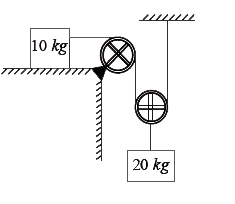
View Solution
Knowledge Check
Two blocks of masses of 40 kg and 30 kg are connected by a weightless string passing over a frictionless pulley as shown in the figure.
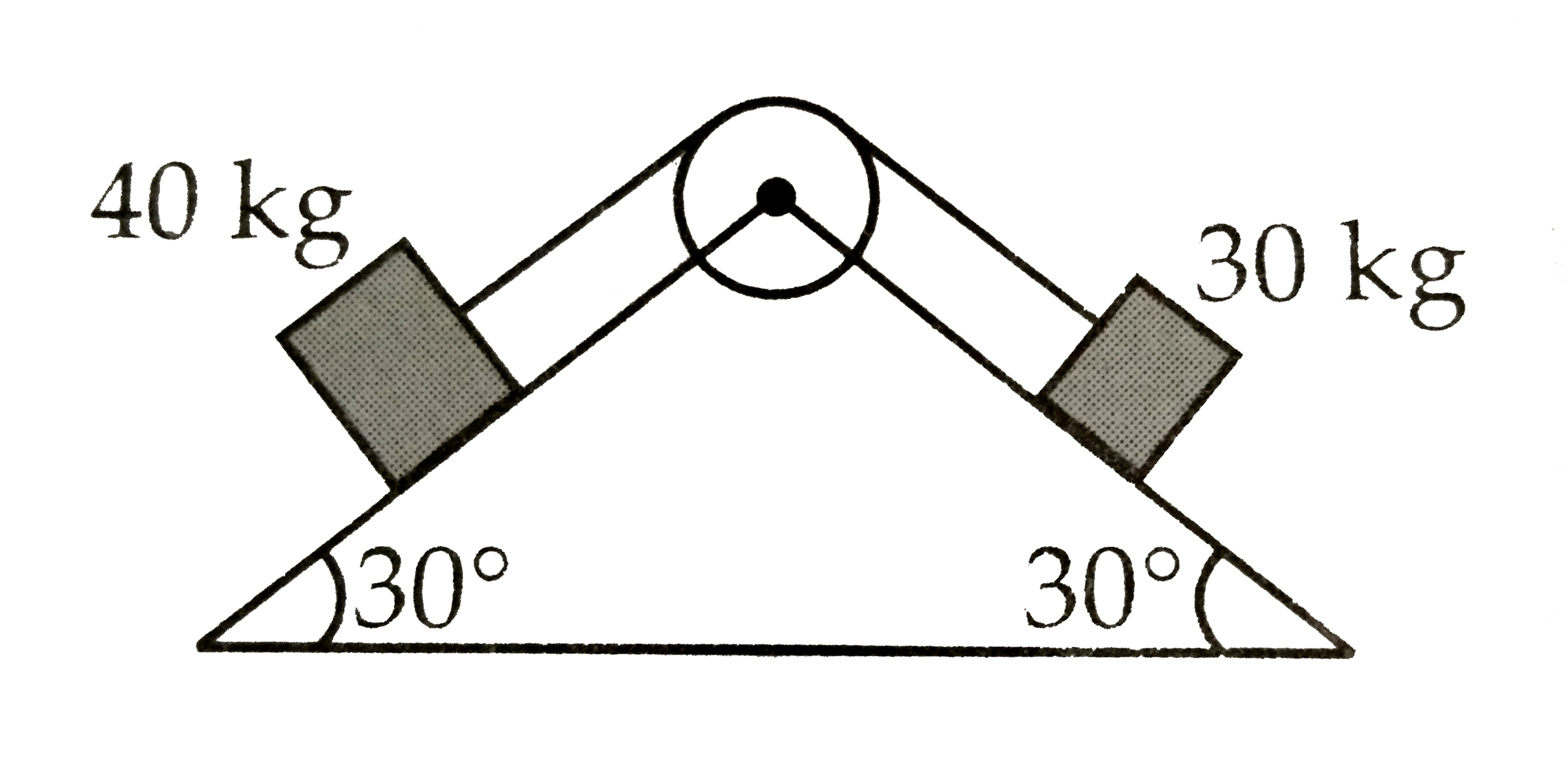 A0.7ms−2B0.8ms−2C0.6ms−2D0.5ms−2
A0.7ms−2B0.8ms−2C0.6ms−2D0.5ms−2Two blocks of masses of 40 kg and 30 kg are connected by a weightless string passing over a frictionless pulley as shown in the figure.
 A188 NB2=368 NC288 ND168 N
A188 NB2=368 NC288 ND168 NTwo blocks of masses of 40 kg and 30 kg are connected by a weightless string passing over a frictionless pulley as shown in the figure.
 A0.7ms−2B0.8ms−2C0.6ms−2D0.5ms−2
A0.7ms−2B0.8ms−2C0.6ms−2D0.5ms−2
A mass string going over a clamped pulley of mass m supports a block of mass M as shown in the figure. The force on the pulley by the clamp is given
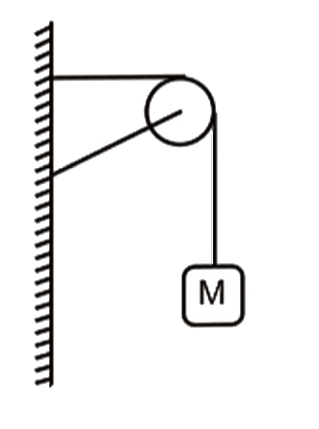
View SolutionTwo masses 2m and m are attached to the ends of the card which passes over a pulley of mass m and radius R. Calculate the tension in the wire on both sides of the pulley. Assume no slipping.
View SolutionTwo blocks are connected by a cord passing over a small frictionless pulley and resting on frictionless planes as shown in the figure. The acceleration of the blocks is :
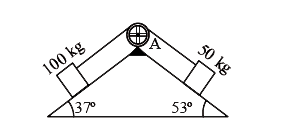
View SolutionTwo blocks A and B , each of mass 10kg , are connected by a light string passing over a smooth pulley as shown in the figure. Block A will remain at rest if the friction on it is
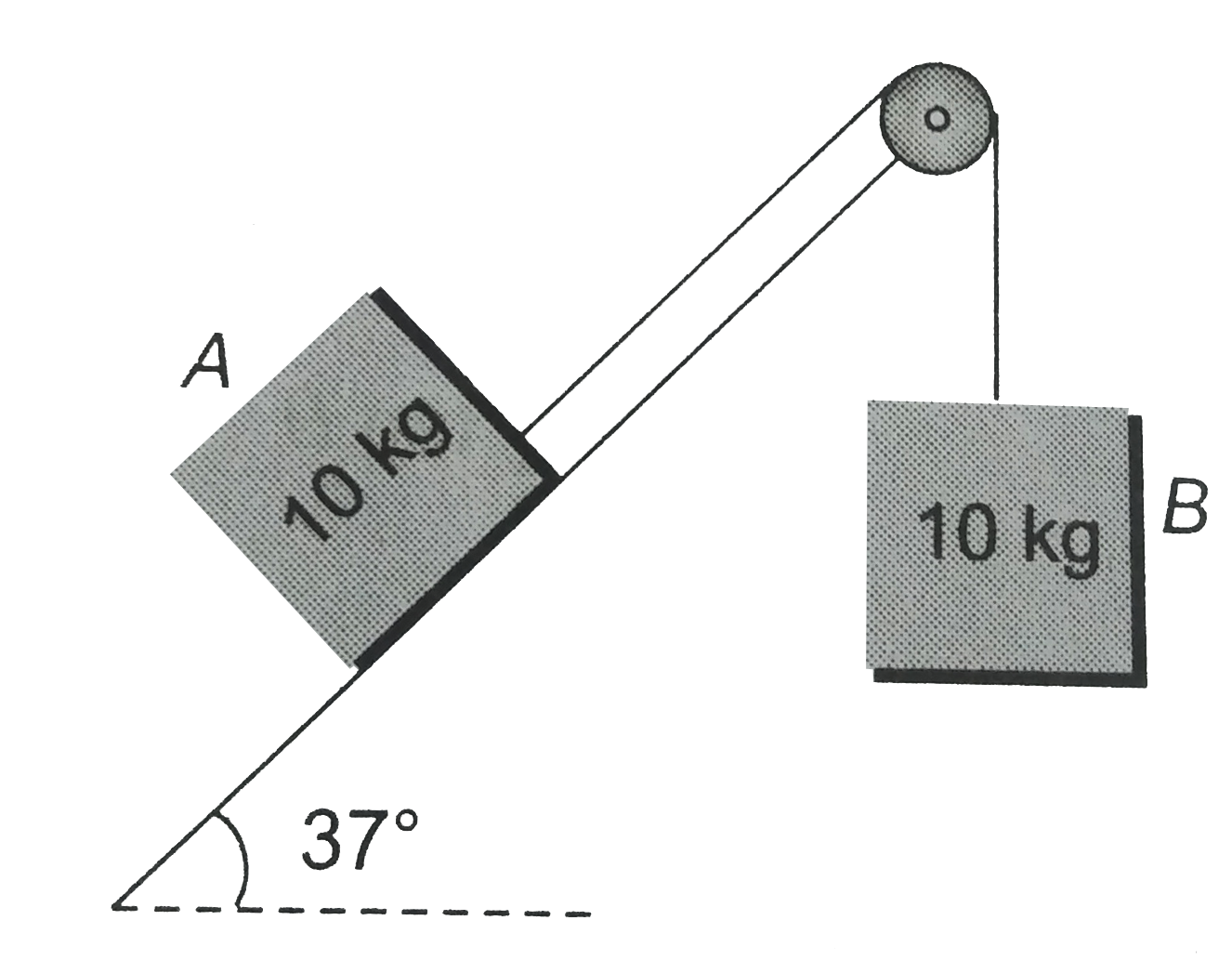
View SolutionA string with one end fixed on a rigid wall, passing over a fixed frictionless pulley at a distance of 2m from the wall, has a point mass M of 2kg attached to it at a distance of 1m from the wall. A mass in of 0.5kg is attached to the free end. The system is initially held at rest so that the string is horizontal between wall and pulley and vertical beyond the pulley as shown in Fig. The system is released from the rest from the position as shown.
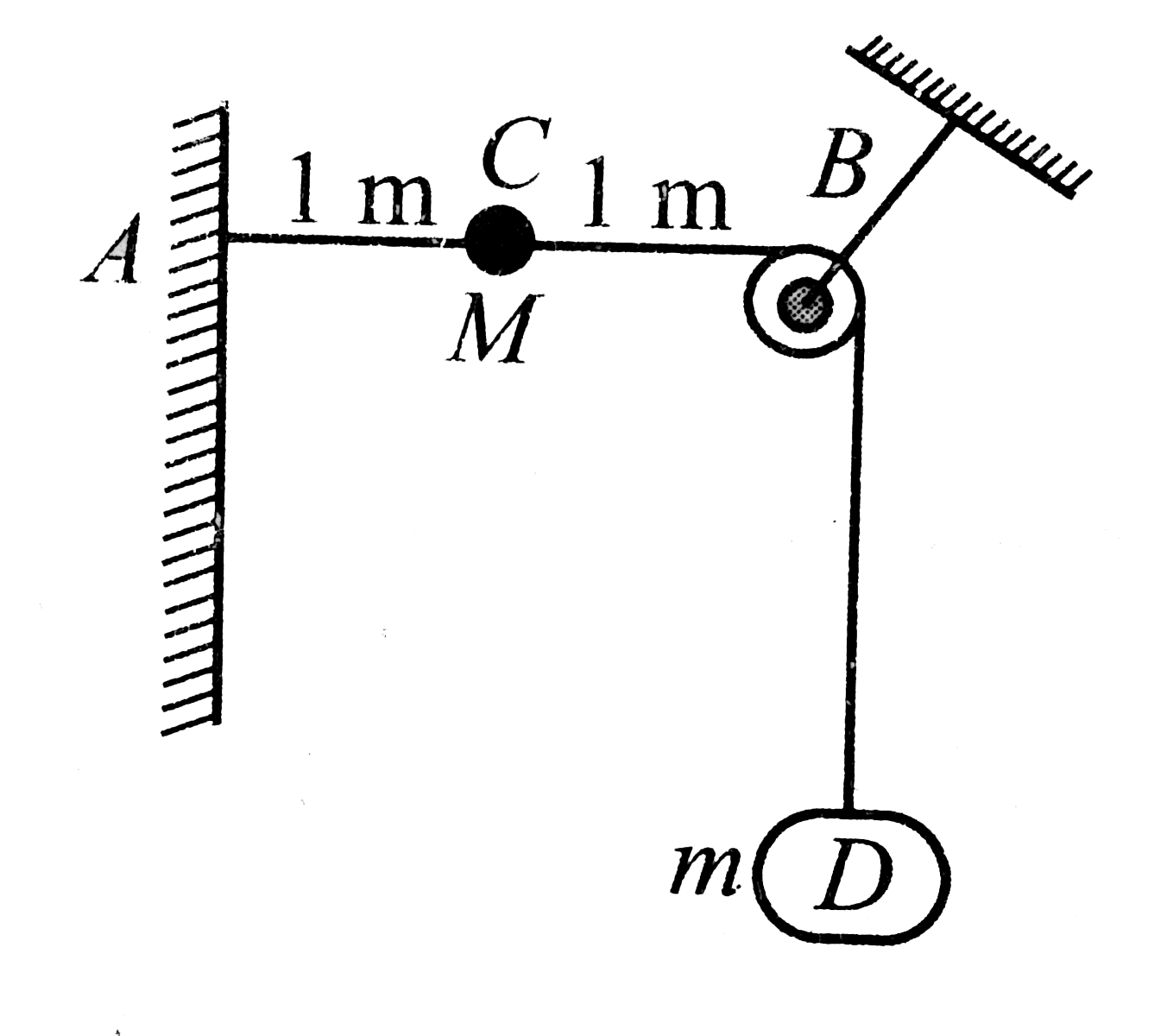
The ratio of velocity of M and m when M strikes the wall is
View Solution
